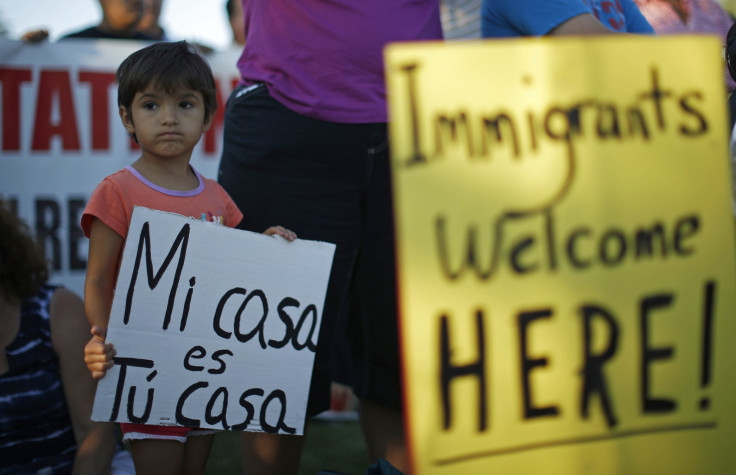
If you've been keeping tabs on immigration news, then chances are you've learned that the United States is currently in an "immigration crisis" with a huge number of child migrants (and immigrants, in general) making their way into the country from South America. Many of these immigrants are fleeing their native countries to leave behind war-ridden regions and a world of violence. While the country is seemingly in a crisis, a new paper from Rice University's Baker Institute for Public Policy has examined historical migration data and begs to claim otherwise.
"In recent months, print and television journalists have presented the American public with a 'crisis' of illegal immigration on the U.S.-Mexico border," said Tony Payan, the Baker Institute's Françoise and Edward Djerejian Fellow for Mexico Studies and director of the institute's Mexico Center. "Much of this recent discussion has centered on Central American children traveling alone and on allegations that they are responding to motivations created by the Obama administration's Deferred Action for Childhood Arrival policy. The word 'crisis,' however, can have alternative meanings. If a 'crisis' of undocumented immigration means a historically large or very rapidly growing flow of undocumented immigrations, the overall national evidence shows today that there is no such crisis. Border Patrol apprehensions of undocumented immigrants attempting to cross the U.S.-Mexico border have in fact plummeted and remain far below levels a decade earlier."
Payan and his co-author, William Gruben, a research associate at the Federal Reserve Bank of Dallas' Globalization and Monetary Policy Institute, took a look at "push" and "pull" factors that motivate Central Americans to migrate into America. The authors found evidence suggesting that the country may not be in crisis. Take, for example, the fact that the U.S. Border Patrol arrested 64 percent less individuals in 2013 than they did in 2004.
That's not to say there aren't increases. There was a 26.5 percent increase in apprehensions between 2011 and 2013 -- the increase was accredited to the fact that the prior decrease was due to budget cuts of the Great Recession. What's more, both authors admit that children traveling alone has increased, as have the apprehensions of these children.
"Thus, it may be preliminary to draw definitive conclusions about record numbers of unaccompanied children based on four full-fiscal-year observations plus monthly observations into a fifth year," say the authors. "Other data, including total apprehensions for any undocumented child immigrants, accompanied or otherwise, extend more than a decade. Preliminary estimates for fiscal year 2014 suggest that these apprehensions have remained below levels a decade earlier."
The authors further argue that other factors play a role in the increased number of undocumented immigrants traveling over the U.S.-Mexico border.
"Finally, there is always the immigrants' ongoing calculation of the constantly changing probabilities of apprehension, remuneration and survival," they said. "The key with all of these variables, however, is to understand which tug in what direction and weigh them accordingly in order to understand the overall effect on migration wave -- this is true for both push and pull factors. But given the statistics story we have presented, we can conclude that there is hardly an immigration crisis -- something that would have been a different story around 2005."
© 2025 Latin Times. All rights reserved. Do not reproduce without permission.





